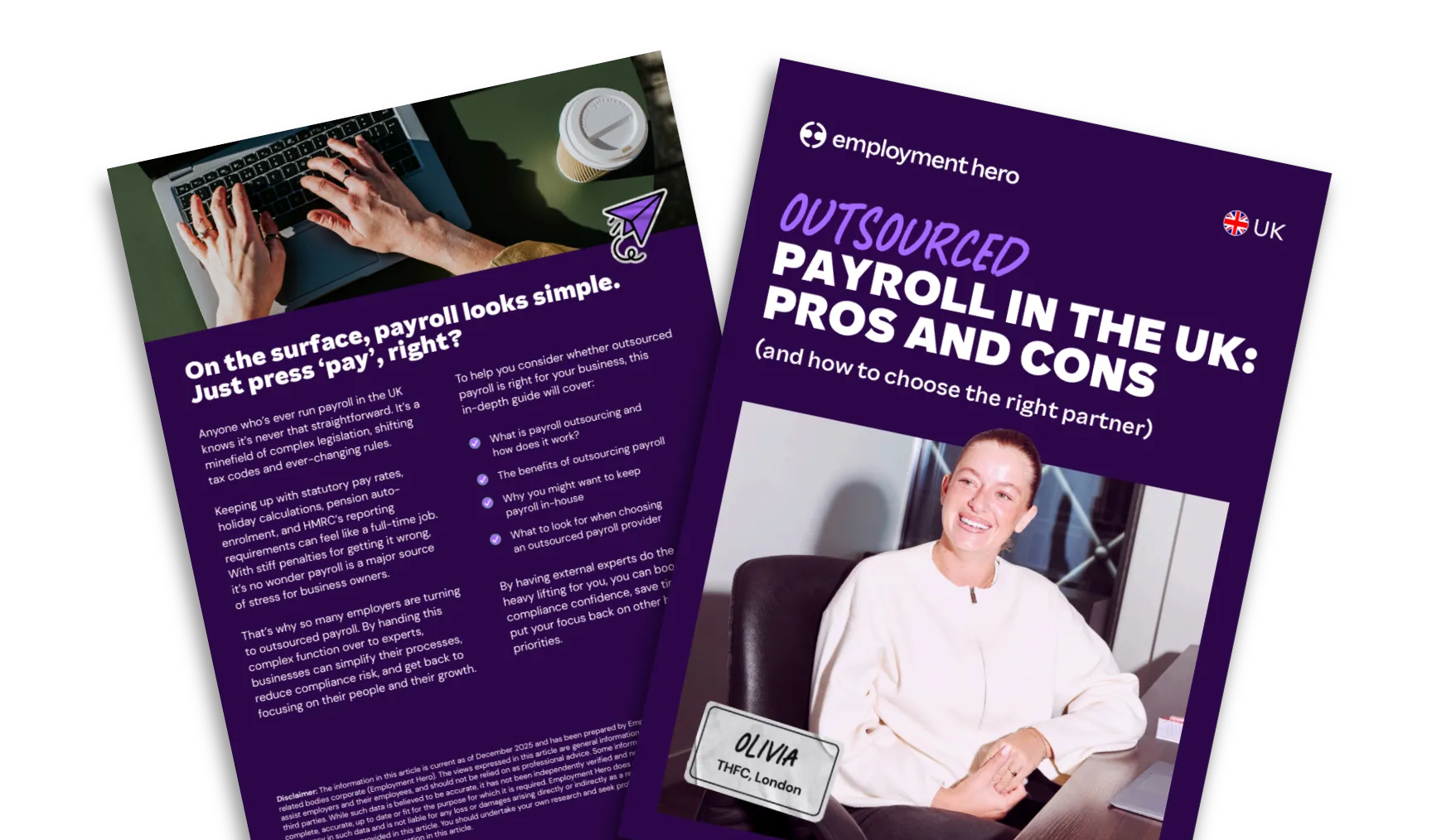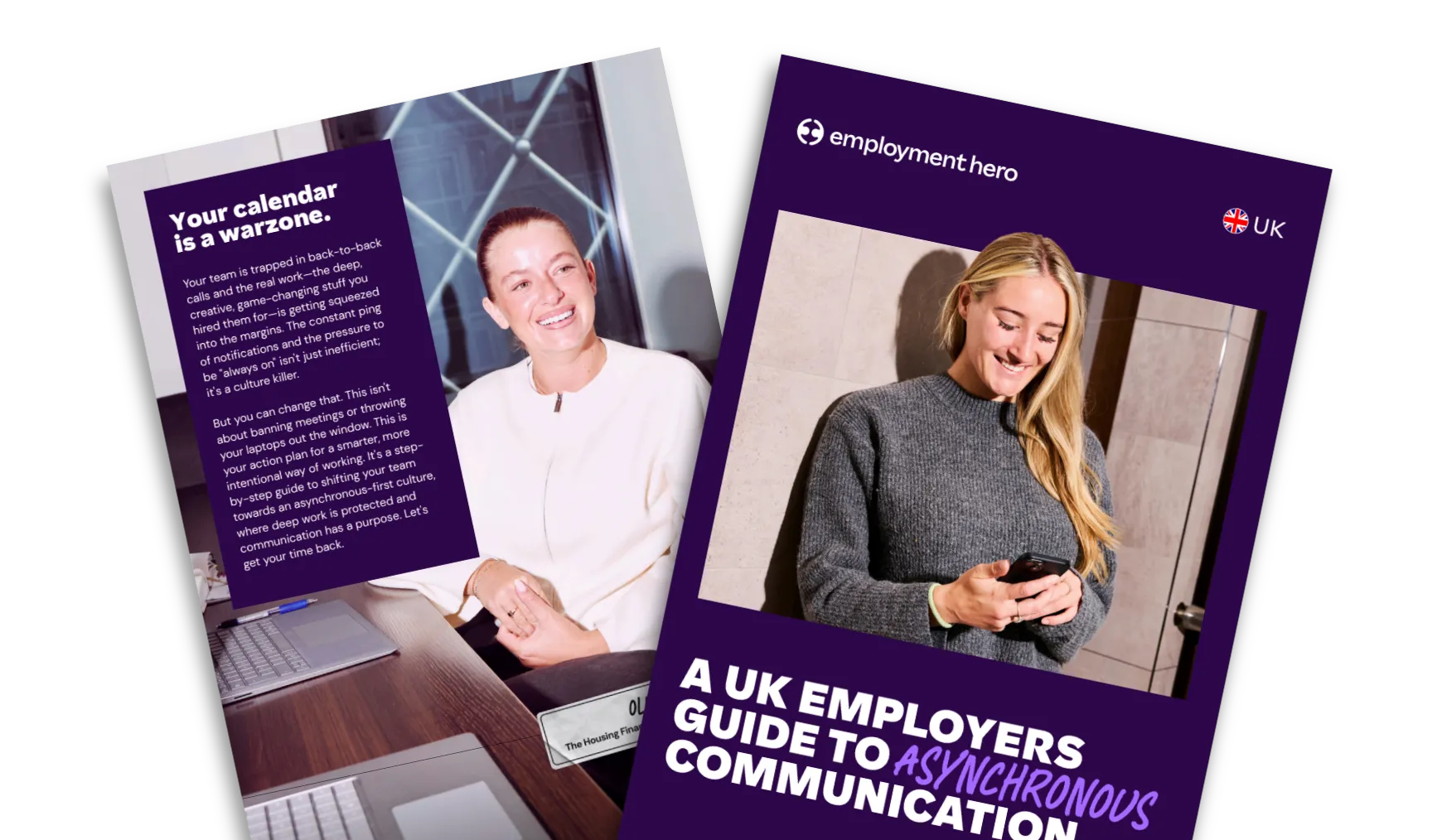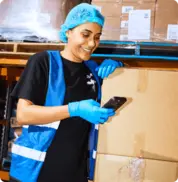Gamification for Employee Engagement: A UK Business Owners Guide

Contents
Employment Hero’s research shows that job satisfaction could be better, with the average job satisfaction rating among employees being 6.4 out of 10. We know it’s not terrible, but it’s also not great. And we can all do better.
The issue with a lack of satisfaction is that it leads to disengagement. It’s easy to spot employees who are quiet, going through the motions and doing the bare minimum. But for business owners and HR managers, knowing how to solve this problem is challenging.
The old ways of motivating teams like the occasional team lunch and annual bonuses aren’t quite working the way they used to. This quiet quitting is a silent killer of productivity, innovation and morale. You need to wake your people up.
It’s time to move beyond outdated approaches and start communicating in a way that resonates with today’s workforce, through progress, achievement and recognition. While gamification for employee engagement is still gaining traction, forward-thinking companies are beginning to harness its power. They’re not just adding games to work; they’re reimagining how work can be more motivating, rewarding, and meaningful.
What is gamification?
Gamification is the strategic use of game-like elements to make everyday work more engaging and rewarding. This can include:
- Points
- Badges
- Leaderboards
- Progress tracking
It’s not about playing games at work; it’s about tapping into the same human psychology that makes games so motivating. While it might sound like an obscure concept, by turning progress into something visible and achievement into something celebrated, gamification helps employees stay motivated, teams stay aligned and businesses build cultures that people genuinely want to be part of.
What is gamification in the workplace?
Gamification in the workplace is about transforming everyday tasks into meaningful, motivating experiences. The game mechanics brought into daily workflows are designed to spark engagement, drive performance and nurture a culture of growth and recognition.
For many businesses, success is measured by outcome, which can sometimes negatively impact motivation. Whereas companies using gamification for employee engagement foster a culture of celebrating progress. Imagine turning compliance training into a mission that earns rewards, or transforming sales targets into a friendly competition that fuels collaboration and achievement. It’s a simple yet powerful way to turn disengagement into energy, participation and real results.
How gamification can supercharge employee engagement
Companies using gamification for employee engagement tap into our core human drivers: the deep-seated desire for purpose, mastery, achievement and recognition.
By creating clear goals, offering instant feedback on progress and celebrating every win, you turn work into a more satisfying experience. A well-designed gamification strategy can transform a disengaged workforce into a team of motivated players who are invested in their own success and the success of the business. The first step is often a simple employee engagement survey to see where you stand.
Real-life examples of gamification that works
Companies using gamification for employee engagement isn’t just folklore, it’s a strategy that businesses are already using. Tech giants, global sales organisations and innovative customer service teams are leveraging gamification to smash their goals. They are demonstrating that when you make work more engaging, you get better results. These businesses prove that gamification is a serious business tool, not a passing fad.
5 Powerful examples of gamification for employee engagement
This is your playbook of proven tactics. These examples can be adapted to almost any business to make an immediate impact on engagement. Here are five ways you can begin using gamification to supercharge employee engagement.
- Onboarding quests
Turn the onboarding process into an adventure. New hires earn points and unlock badges for completing key tasks, such as:
- Setting up their HR profile
- Completing mandatory training
- Meeting key team members.
This makes the first few weeks more engaging and ensures critical steps aren’t missed.
- Learning leaderboards
Make training a competition. Award points for completing e-learning modules, with a live leaderboard showing who is leading the way. This encourages faster completion and higher retention of information.
- Wellness challenges
Create team-based wellness challenges where employees log activities like steps taken, minutes meditated, or healthy meals. Teams compete against each other, fostering both wellbeing and camaraderie.
- Idea submission badges
Encourage innovation by creating a system where employees submit ideas for business improvement. Award badges for “First Idea,” “Most Voted Idea,” or “Implemented Idea” to recognise and reward creative thinking.
- Digital “high fives”
Implement a peer-to-peer recognition system where employees can award points or digital “high fives” to colleagues who have helped them or demonstrated company values. This reinforces a culture of appreciation.
5 Smart examples of gamification for team building
A team that plays together, stays together. Gamification can be a powerful tool for strengthening the bonds between your employees. Here’s how:
- Team sales competitions
Instead of individual leaderboards, create team-based sales contests. The entire team works towards a shared goal and everyone shares in the reward. This promotes collaboration over cut-throat competition.
- Virtual escape rooms
Use online escape room platforms that require a team to work together to solve puzzles and “escape” within a time limit. It’s a fun and effective way to improve communication and group problem-solving skills.
- Collaborative project milestones
For large projects, create a shared progress bar or “map” where the team unlocks the next stage by completing a collective set of tasks. This visualises shared progress and celebrates teamwork.
- “Guess Who?” team quizzes
Create quizzes based on fun facts submitted by team members. It’s a lighthearted way for people to learn more about their colleagues on a personal level, which is especially valuable for remote or hybrid teams.
- Cross-departmental challenges
Pit different departments against each other in a friendly competition, such as a charity fundraising drive or a creative challenge. This builds bridges across the organisation and breaks down silos.
5 Impactful examples of gamification for strengthening team culture
Culture isn’t what you write on the wall; it’s what you reward and celebrate every day. Gamification is a powerful way to bring your company values to life.
- Values-based recognition
Create a peer-to-peer recognition system where employees can award points specifically for actions that demonstrate a company value, such as:
- Customer obsession points.
- Innovate and simplify badges.
- Culture quizzes
Regularly run short quizzes about the company’s history, mission and values. This reinforces cultural knowledge in a fun, low-pressure way.
- “Values Champion” leaderboard
Create a leaderboard that isn’t based on sales or performance, but on who has received the most values-based recognition points from their peers. This makes living the values a visible and celebrated act.
- Ethical dilemma simulations
For roles that require strong ethical judgment, create gamified scenarios where employees must make decisions based on company values and policies, earning points for choosing the correct course of action.
- On-the-spot rewards
Empower managers to award instant digital badges or points to employees they see living the company values in their day-to-day work. This reinforces desired behaviours in real-time.
The undeniable benefits of gamification for your business
It’s no secret, engaged teams don’t just work harder, smarter, stay longer and contribute more to business success. Gamification isn’t just a nice-to-have; it’s a proven way to drive measurable impact across your organisation.
Companies using gamification for employee engagement often find they benefit from:
- Higher productivity: Gamification can lead to a significant increase in employee productivity by providing clear goals and instant motivation.
- Improved employee retention: Engaged employees are far less likely to leave. By making work more satisfying and rewarding, you reduce costly employee turnover.
- Better knowledge absorption: Gamified training leads to higher engagement and better retention of information, resulting in a more skilled and knowledgeable workforce.
- Stronger company culture: When you gamify your values and recognition, you build a stronger, more connected and more positive company culture.
The rules of the game: best practices for internal gamification
When it comes to gamification, design matters. A well-crafted experience can ignite motivation and connection. On the other hand, a poorly designed one can have the opposite effect. To create a game that truly engages your people, focus on these proven best practices.
- Align with business goals: Every game must have a purpose. Don’t gamify for the sake of it. Tie every initiative to a clear business objective.
- Keep it simple: The rules should be easy to understand in seconds. If it’s too complicated, people won’t participate.
- Ensure fairness and inclusivity: The game should be winnable by everyone, not just your top performers. Ensure it’s accessible and fair to all roles and skill levels.
- Celebrate participation, not just winning: Reward effort, progress and participation. Recognise people for trying, not just for coming in first place.
- Get feedback and adapt: Your first version won’t be perfect. Launch a pilot, gather feedback from your employees and be prepared to tweak the rules.
How gamification connects your employees, your customers and your business
There is a powerful ripple effect that starts with your team and ends with your customers. Engaged employees create happy customers, which drives business growth.
As an example, when you use gamification to train your customer service team on product knowledge, they provide faster, more accurate service. Or when your sales team is motivated by a team-based competition, they collaborate to close more deals and drive more revenue. Gamification connects the dots between internal engagement and external success, turning your employee engagement into a profit centre.
How to design your first gamification initiative
Ready to bring gamification to life in your business? Here’s your quick-start guide to getting it right from day one.
- Identify a single problem: Don’t try to boil the ocean. Pick one clear, specific business problem to solve. (e.g., “New hires are taking too long to complete their onboarding training.”)
- Define success: How will you know if you’ve won? Define a clear, measurable outcome. (e.g., “Reduce average onboarding completion time from 4 weeks to 2 weeks.”)
- Choose simple mechanics: Start with the basics. A simple points-and-badges system is a great place to begin.
- Launch a pilot: Roll out your game to a small, controlled group first. Measure the results, get their feedback and refine the process before you launch it company-wide.
Common gamification pitfalls and how to avoid them
Like any powerful HR tool, gamification works best when it’s thoughtfully designed. When done well, it inspires collaboration, motivation and achievement, but when done poorly, it can create frustration or even disengagement. The key is to strike the right balance between fun and function, competition and collaboration, recognition and reward.
Before you roll out your own initiative, learn from the common mistakes businesses make and more importantly, how to avoid them… so your gamification strategy sets your people up for lasting success.
| The Pitfall | The Fix |
| Creating unhealthy, cut-throat competition that kills teamwork. | Focus on team-based competitions or individual progress against a personal best, rather than just individual leaderboards. |
| Making the rules too complicated or the rewards uninspiring. | Keep the rules simple. Offer rewards that people actually want, which might be non-monetary, like an extra day of leave or public recognition. |
| Only rewarding the top 1%. | Create multiple ways to win. Reward improvement, consistency and participation, so everyone feels they have a chance to be recognised. |
Embrace the future of employee engagement with Employment Hero
Future-proofing is essential for modern businesses, and companies using gamification for employee engagement are ahead of the curve. By transforming everyday tasks into meaningful, motivating experiences, you’re not just improving engagement, you’re building a culture of progress, recognition and shared success.
Disengagement doesn’t have to be your business reality. When employees can see their impact, celebrate their achievements and feel part of something bigger, everything changes; productivity rises, retention strengthens and your culture thrives.
But finding the time to focus on new initiatives can be challenging when you have a to-do list as long as your arm. This is where Employment Hero comes into play. Our Employment Operating System (OS) takes the traditional, isolated elements of employment and puts them into one place. Find and hire top talent, onboard, manage complex payroll, supercharge employee engagement and more.
One system, everything employment.mployee lifecycle. Find and hire top talent, onboard, manage complex payroll, support compliance and more.
Related Resources
-
 Read more: Outsourcing Payroll Guide: Pros and Cons for UK Businesses
Read more: Outsourcing Payroll Guide: Pros and Cons for UK BusinessesOutsourcing Payroll Guide: Pros and Cons for UK Businesses
Discover the pros and cons of outsourcing payroll in the UK. Learn how it can save time, reduce errors and…
-
 Read more: Asynchronous Communication: Best Practices and How to Avoid Decision Latency
Read more: Asynchronous Communication: Best Practices and How to Avoid Decision LatencyAsynchronous Communication: Best Practices and How to Avoid Decision Latency
Learn how to implement asynchronous communication effectively. Discover its benefits, challenges and best practices for remote and hybrid teams.
-
 Read more: Role Clarity and Job Expectations: The Manager’s Guide
Read more: Role Clarity and Job Expectations: The Manager’s GuideRole Clarity and Job Expectations: The Manager’s Guide
Learn how to define roles and responsibilities effectively. Discover actionable steps to improve role clarity and boost team performance.



















